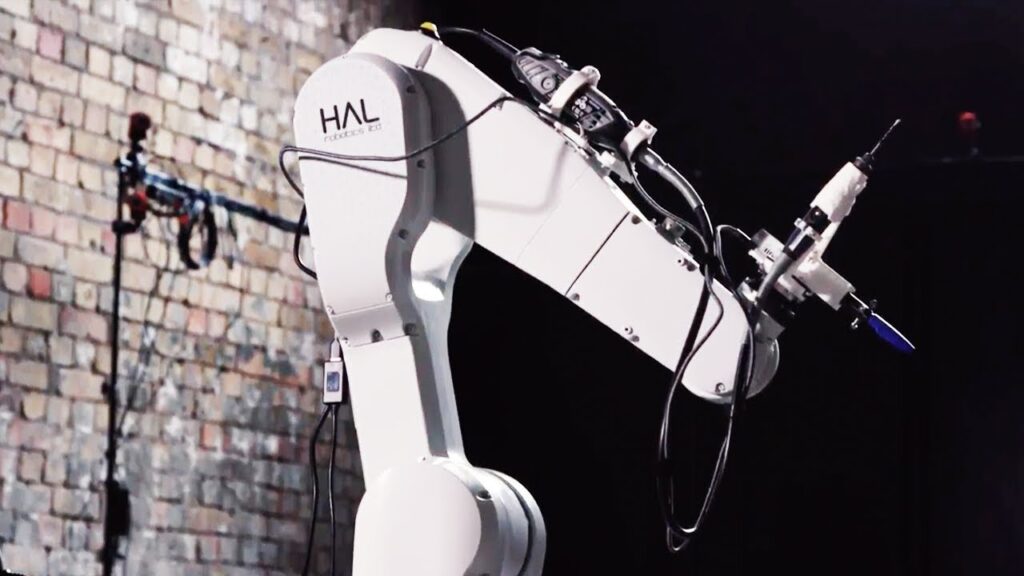Robots have been a part of our imagination and pop culture for decades, often depicted as futuristic beings capable of accomplishing complex tasks. However, recent developments in technology have brought us closer to turning this imagination into reality. From manufacturing to healthcare, robots are slowly revolutionizing industries across the globe. One industry at the forefront of this robotic transformation is construction.
Industrial robots in manufacturing have paved the way for their expansion into the construction field. In a YouTube video titled "The Construction Robots are Coming," Fred Mills explores the roles that robots are starting to play in construction. This thought-provoking video sheds light on the potential benefits and drawbacks of integrating robots into the construction process.
In the video, Mills showcases various examples of robots being used in construction projects. These robots are specifically designed to handle heavy lifting, bricklaying, and even 3D printing of houses. One of the most striking examples is the semi-automated bricklaying machine, capable of laying bricks with remarkable precision and speed. This automation significantly reduces the time and labor required for bricklaying, ultimately leading to cost savings for construction companies.
One of the key advantages of using robots in construction is their ability to work tirelessly and efficiently. Unlike human workers who require breaks and rest periods, robots can operate 24/7, leading to a significant increase in productivity. This increased efficiency not only accelerates the construction process but also ensures timely project completion.
Furthermore, robots offer enhanced safety measures in hazardous construction environments. With their advanced sensors and AI algorithms, robots can identify potential risks and prevent accidents. This ensures the well-being of workers and reduces the likelihood of costly mishaps on construction sites.
While there are undoubtedly numerous benefits to integrating robots into construction, there are also limitations. One of the primary concerns raised in the video is the potential loss of jobs for human workers. As robots become more capable and efficient, there is a growing fear that construction companies will rely less on human labor. However, Mills argues that robots should be seen as collaborators rather than replacements. Human workers can be upskilled to operate and maintain these robots, leading to a shift in job roles rather than complete job loss.
Another challenge highlighted in the video is the initial cost of implementing robotic systems. Robots, particularly those designed for construction, can be quite expensive. This cost can be a deterrent for small construction companies with limited financial resources. However, as technology advances and adoption increases, the cost of robots is expected to decrease, making them more accessible to a wider range of construction firms.
Looking towards the future, Mills predicts that robots will play an increasingly vital role in construction. From automated excavators to drones for surveying, the possibilities are endless. However, he emphasizes the importance of collaboration between humans and robots, with workers maintaining their crucial decision-making abilities and leveraging their creativity. This symbiotic relationship between humans and robots has the potential to revolutionize the construction industry and create more efficient and sustainable buildings.
In conclusion, the integration of industrial robots in manufacturing has paved the way for their expansion into the construction field. Fred Mills' YouTube video, "The Construction Robots are Coming," provides valuable insights into the roles that robots are beginning to play in construction projects. While there are clear benefits to incorporating robots, such as increased productivity and safety, challenges exist, including potential job displacement and initial costs. Nonetheless, the future of construction undoubtedly lies in collaboration between humans and robots, with each leveraging their unique strengths to create innovative and efficient buildings. The construction robots have arrived, and their impact on the industry will be nothing short of revolutionary.
Subscribe to The B1M to explore more fascinating videos on the future of construction and the role of industrial robots in manufacturing. Stay updated on the latest happenings in this transformative industry, as the construction world steps into a new era of technology and innovation.
References:
- Industrial Robots in Manufacturing
- The Construction Robots are Coming.
Industrial Robot
"Revolutionizing Construction and Manufacturing: The Rise of Advanced Robotics in Industrial Operations"


